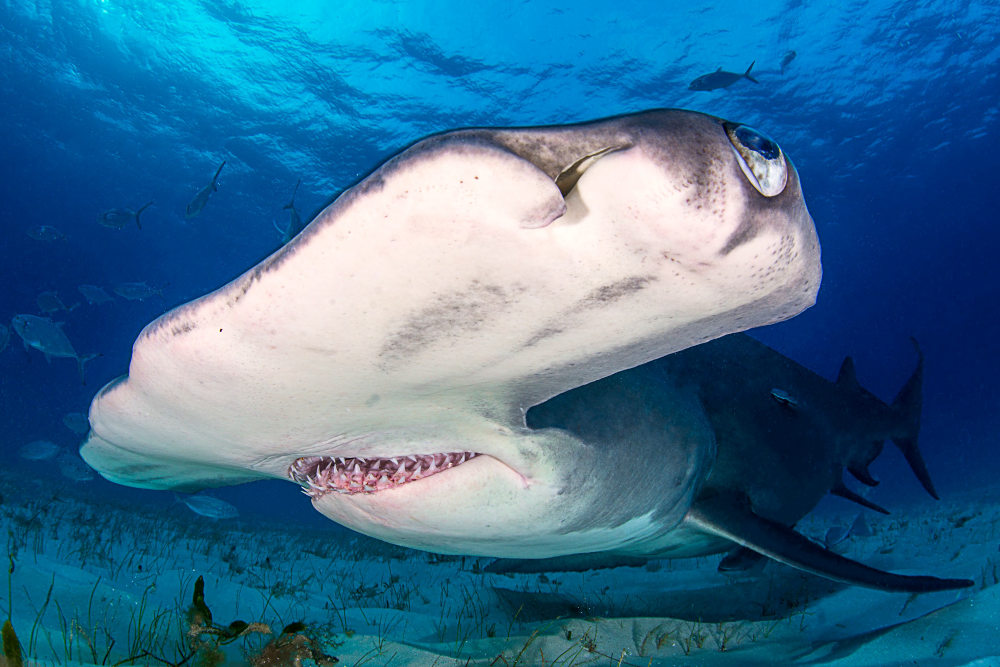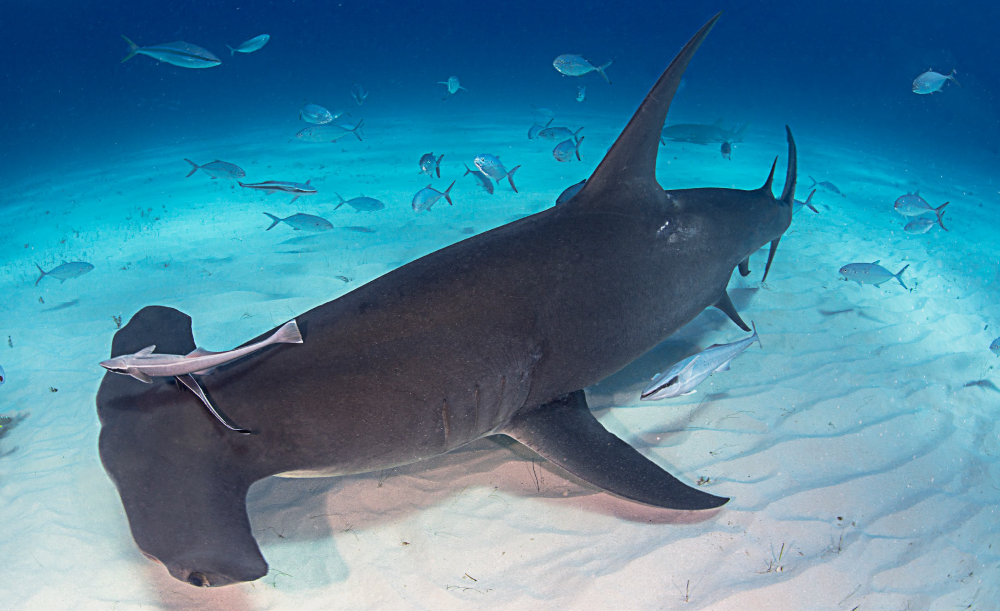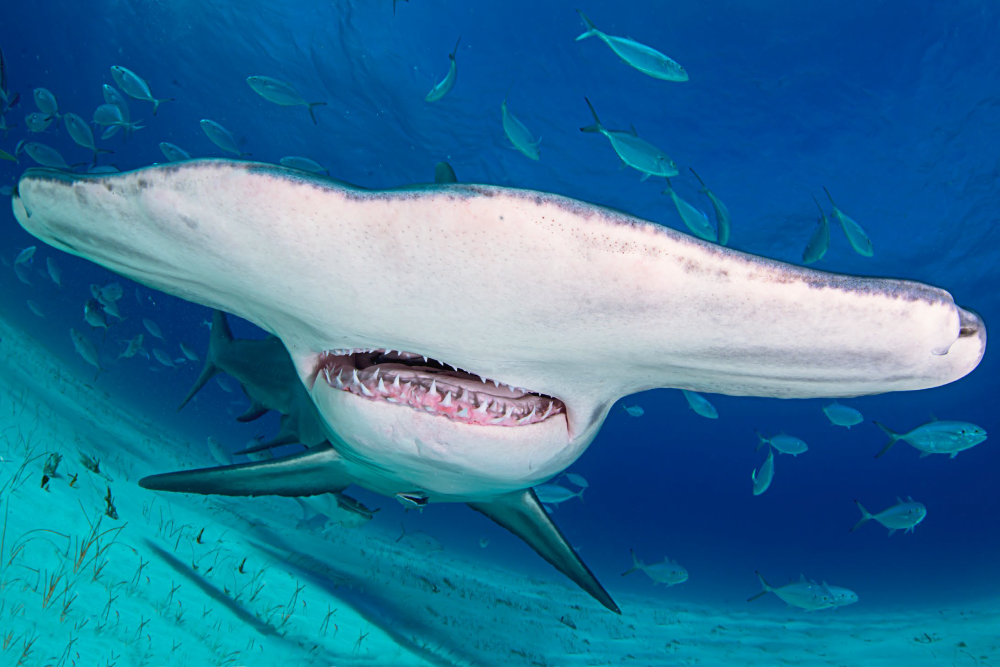
The Bimini atoll consists of two islands connected one another by a boat service that has roughly the frequency of a subway ride at a big city: North Bimini, which is the center of local life, and South Bimini, less inhabited and characterized by long kilometers of beaches, deserted and immersed in the most captivating silence of nature. The capital of the atoll is located in North Bimini and its name is Alice Town, a rather quiet small town, whose rhythms of life flow with the speed of a Mexican siesta. Walking the streets of Alice Town, you get the feeling of a Caribbean culture fairly original, although it soon becomes clear that there are many, among the natives, to consume too much alcohol. Nevertheless, no one bothers you while you peacefully stroll down the small paved street in the center, between the scampering of electric cars and not too many tourists. Here came to do deep-sea fishing even Ernest Hemingway. A place for connoisseurs of the sea, then. However, the scuba diving capital is the South Island instead. The airport in South Bimini, a hut or so, is one of those airports that make you realize to be just landed in a place outside the world, remote. And here’s the strange rule that exists in the world of diving: a minuscule airport equals a wild marine environment and meetings that elsewhere you can only dream of. The Bimini Sea keeps one hundred percent his promises. We disembark with big ambitions: Sergio Riccardo, Leopoldo Palomba, Marco Bebi, Salvatore Grimaldi and me…a group consolidated by a dozen years of traveling coexistence. The first impression is to find ourselves in those lands that are metaphorically referred to as the back of a whale. Once arrived in the structure that hosts us, the Bimini Sands (more like a residence than a hotel, but very refined), we are greeted by a spiritual silence: we are at the beginning of March, still Caribbean winter season and hotel guests are few. Better. For me at least, ’cause when I live the contact with the sea I am a big proponent of the motto “the less it is, the better off you are”. The next day we walk the fifty meters that separate us from the jetty and we appreciate the comfort of the diving boat. There are other guests, most of them Americans, but there’s no need to jostle. Let us come to the reasons for our trip. Why Bimini? Why in March? It is the season of meetings with the great hammerhead shark, the Sphyrna mokarran, a majestic animal reaching 5-6 meters in length and, according to some legends, there were also sightings of even larger. The Big hammerhead shark prefers water temperatures not too high, around 24-25 degrees Celsius, and from December to March grazes in the shallow waters. Our diving boat sets sail and reaches the dive spot in just over five minutes. A long briefing by the book follows: when it comes to diving with sharks of considerable size, the whole world is country and we must respect precise and strict rules. The dive is very easy: we ballast above the norm because we have to sit, flattened at the bottom, kneeling and not move excessively. The depth is of six to seven meters and the environment is a sandy plateau. The guides bring down a steel basket filled with delicacies for the sharks: many specimens of a species close to tuna, well gutted, to stimulate the very sharp senses of the sharks, will be the best treat for the guests at the banquet. Just a few minutes and the first guests come quickly: a band of nurse sharks come close to food. The nurse is a timid shark, not very aggressive and very friendly with divers. It does not need to swim continuously to breathe like other species of sharks. They stop in front of divers as if hypnotized by the presence of food, while we got settled in a straight line and in close distance to each other, for safety reasons. Still the time to spit out some bubbles and the expected protagonist makes his appearance, sprouting from the blue…the first two Great hammerhead sharks. They don’t care too much of us bipedal, but are attracted only by the basket with the food. They stare at it, and raise their characteristic head at the time of the bite, receiving in exchange for their unforgettable show a generous morsel from the guides. The lightings of our strobes enlighten the scene. Among nurse sharks huddled on the sand and the comings and goings of mokarran, the show is like the abysses’ paradise. Yet we are below the surface for just a few arms. Time passes, the water is fresh, our teeth begin to rub unintentionally, feeling the early cold symptoms, but we hold up. There is too much of everything to get back up. Our dives last on average 80 minutes or more. At the end, we go up when we run out of the sharks’ buffet. Adrenaline increases when, a few meters from us, it appears the sinister silhouette of a bull-shark, Carcarinus leucas, a massive shark with a great mass and muscular power, which is among the most aggressive species. The Leucas was involved, in many seas of the world, in many cases of attack to humans, especially to swimmers. In short, it is good to keep an eye on it when you dive. Not surprisingly, the guides immediately made a loud noise, banging a plastic stick on a metal surface, to send it away. And the Leucas remained, so to speak, at safety distance. Even the next days reserve the same surprising emotions. Carousels of nurse sharks, lunch invitation for the Great Hammers, and a bull shark that turns around but it is not invited to the party. The clarity of the water is also up to expectations: a heavenly visibility, ideal for photos and underwater filming. In addition to the site the locals call The Great for the presence of hammerheads, I still have time for a couple of dives. And the Bimini’s barrier reef is more than interesting. In a dive site called The triangle (wouldn’t it be one of the Bermuda’s, which includes this area ???) the amount of gray sharks of the Caribbean is amazing and there is no pasture to attract them. They swim peacefully two meters by the divers. Frequent schools of snappers enliven the Caribbean reef, always rather monochrome. Even the last day before departure still reserved a few moments of strong adrenaline to me. To the left of the resort lies a long deserted beach and I went there for a few hours, to read and relax. I’m about to get into the sea, the water up to my belly, and a couple of meters from me is haunting an eerie shadow. I recognize it: it is a Leucas or as they call it in the United States, a bull shark. Precisely a big shark in shallow water. Bimini is this: the excitement you don’t expect, all of a sudden.

You can reach Bimini island from Fort Laudardale (FLORIDA) by flights lasting about 30 minutes. The airport is located in South Bimini, where there is also the BIMINI SAND RESORT.
Connections to North Bimini, home to most of the shops and tourist services, are provided by Ferry at a cost of $ 2 per person each way.
In many stores credit cards are not accepted, in others are accepted only for amounts over $ 25.
The water temperature during the season of the Great Hammerhead Shark, from January to March, ranges between 24 and 25 degrees. The dives may last even over the hour, considering the shallow depths. Therefore, it is advisable a 5mm wetsuit, or a 3 mm but with a Lycra undersuit.
Information: DIVING TOUR ITALY
Phone: 081-8789115
www.divingtour.it
info@divingtour.it
WORDS by Vincenzo Famiglietti and PICTURES by Sergio Riccardo


















